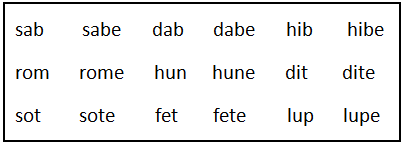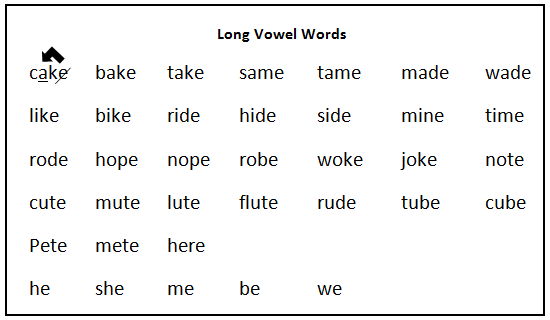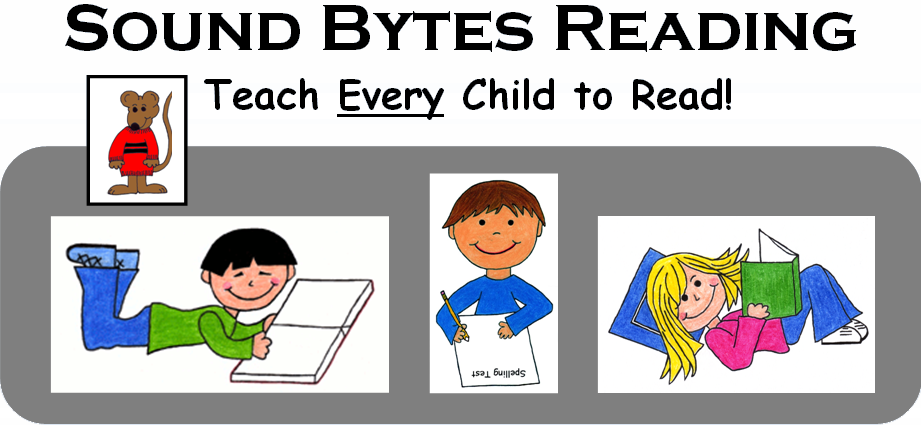Diagnosing Children with Reading Problems – Part 3

Learning to read is a process that includes several major steps. Following these steps in a logical manner will help students become strong readers. Students can begin to have difficulty with reading if any of these steps are skipped or not covered sufficiently.
The reading steps we have discussed in the previous two blog posts are:
1. Does your child know the consonant sounds?
2. Does your child know the vowel sounds?
3. Does your child decode words or sight read?
4. Can your student read words with blends?
This week we will discuss how to help your student if he begins to have difficulty when reading long vowel words. This step is an important one, but it can be learned quickly.
5. Can your student read long vowel words? Ask your student to read these words:

If your student can read the short vowel words, but has difficulty reading the long vowel words, or reads each pair of words as if they are the same word, you need to teach the silent e rule so they know the difference between these two kinds of words.
Some children are already able to sight read most or all of these words, but you can give a test of nonsense words to find out if your student is decoding both short and long vowel words accurately.

If your student cannot easily, quickly and accurately read the words in the lists above, you need to teach him/her how to read long vowel words that have a silent e at the end of the word.
How to Teach Students to Read Words with Long Vowels
Teach all five long vowels (a, e, i, o, u) at the same time. Most students learn the silent e rule quickly and will have no difficulty decoding a large number of words in one sitting once they understand the difference between these two types of words.
Make a list of long vowel words. Start with long a words like: cake, make, rake, bake, take, same, tame, lame, fame, lane, made, wade. Underline the long vowel a in the middle of the word “cake” with a red marker.
Say: “Sometimes the vowel-sound is the same as the vowel-name in words. When that happens, there will usually be an e at the end of the word. At the end of many words the e doesn’t make a sound. We call it the silent e.”
Say: “Look at this word. In this word the vowel says /ā/.” Point to the letter a in the middle of the word. “Now look at the last letter.” Point to the letter e at the end of the word. Say: “This letter e, at the end of the word, is silent.” Draw a slash through the final e. Say: “The final letter e doesn’t make any sound, but it changes the sound that the other vowel in the word makes. It makes the letter a take the sound of its name. Instead of saying the short sound (/a/ as in “cat”), this letter will make the long sound (/ā/ as in “cake”) when you see the silent letter e at the end of the word.”
Slowly pronounce the word ‘/k/…/ā/…/k/’ while moving your finger under each letter of the word. Ask your student to read the word. Sound out the word together: ‘/k/…/ā/…/k/.’ Read a few more words in the same manner.
Ask your student to use what he/she has just learned about the silent e to sound out the words in the list below. You can also teach these short words that have a long e sound: he, she, me, be, we.

If your students understand what you are asking them to do, they will respond fairly quickly and will be able to sounding out each word. If they do not understand at first, explain it again and continue to help them through the lists of words, sounding them out together.
